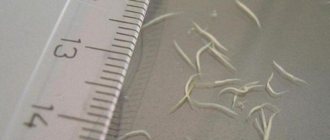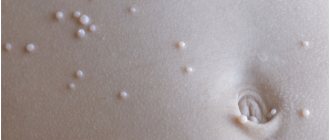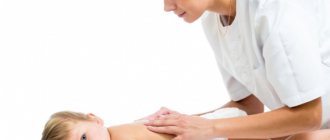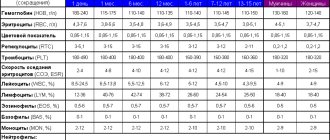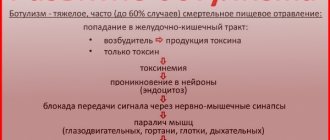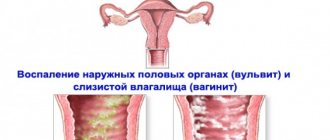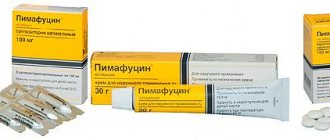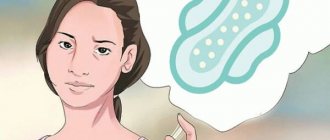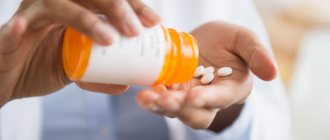People of all ages are equally susceptible to rotavirus infection. The causative agent of the disease is a virus from the rotavirus order. Unlike adults, children are difficult to tolerate this disease. In addition to vomiting and diarrhea, the child’s temperature rises sharply and his general condition worsens. What should parents do at the first signs of rotavirus infection in their child?
How does infection occur?
The source of the virus is a sick person or a virus carrier. It is also possible to become infected from an adult who has a mild form of the disease and does not know about it. From the first days of the disease, the virus begins to multiply intensively and is excreted in feces, at the same time the first signs of the disease appear.
Patients become most contagious on days 3-5 of illness. The basic mechanism of infection is food. Infection is possible through food or water with which the patient has been in contact. The route of transmission is unwashed hands, household items, any things that the patient has dealt with, and where his discharge has ended up.
Despite the fact that the airborne route of infection has not yet been confirmed and is disputed by experts, I advise you to have less contact with any secretions of the patient. Who will find it easier if after your child’s recovery you yourself fall ill from an infection? Do not neglect wearing masks and gloves, take precautions!
Routes of transmission
Contact with an infected person leads to rotavirus entering a healthy body in the following ways:
- Through water , where bacteria appear in feces and vomit. Contaminated tap water is a common carrier of the disease. The virus lives in it for about three weeks.
- Through food. Rotavirus often settles in fish, meat, dairy products, vegetables and fruits. The infection is usually spread by flies or other insects that have come into contact with contaminated feces before coming into contact with food.
- By airborne droplets. The infection enters the body of a healthy person from a coughing or sneezing interlocutor, passes through the stomach, settling in the intestines. After this, the virus multiplies.
- Contact-household method. Bacteria settle on furniture that has been touched by dirty hands, as well as on children's toys. The pathogen is not afraid of detergents, including chlorine-containing ones. Therefore, thorough disinfection of the premises is recommended.
The virus multiplies faster in small spaces. It is enough for one family member to get sick, and the rest will become infected with the disease.
Bacteria are well adapted to cold environments. Even when frozen, food does not die for several months. But they quickly lose their viability by boiling.
But even by carefully monitoring the cleanliness of the body, food and premises, the disease is difficult to avoid. Once infected with rotavirosis, a person poses a danger to others from the first day of illness. A medical mask is a good protection against bacteria entering the body.
How does the disease manifest?
The latent period is usually 1-4 days, often the first signs of illness appear after 12-24 hours. The development of the disease can be typical, then the temperature rises to high numbers, the child begins to vomit, have abdominal pain, bloating, and diarrhea.
At first, the stool is usually watery, foamy yellow, but after 2-3 days it turns green. There are stools from 5 to 10 times a day. The child's body becomes dehydrated. The baby becomes lethargic, drowsy, and refuses to eat. Usually the patient is thirsty, but if he refuses, it is necessary to give him something to drink at any cost.
Another scenario for the development of the disease is possible, when catarrhal symptoms appear first:
- nasal discharge;
- pain and sore throat;
- conjunctivitis;
- dry cough.
Diarrhea in this case appears later. There may be no fever at all.
How to recognize and treat rotavirosis in tiny children under one year old who cannot explain what is wrong with them? Characteristic features:
- elevated temperature;
- drowsiness;
- lethargy;
- causeless crying;
- refusal to eat;
- rumbling in the stomach.
Children press their legs to their tummy. Later, the main signs of an intestinal infection appear - diarrhea and/or vomiting. Infants are more susceptible to the disease. They become dehydrated quickly. Be sure to call a doctor, and before he arrives, little by little take the baby from a pipette, pacifier or syringe without a needle.
With quality treatment, the duration of the disease is usually 4-7 days. Complications of rotavirosis in most cases are caused by dehydration of the patient's body in the acute period. The person who has recovered from the infection develops a stable immunity to the infection.
Treatment of rotavirus infection
Treatment of rotavirus infection and diarrhea should always be combined with dietary measures and the use of appropriate antidiarrheal drugs.
In the first days, it is recommended to start eating with low-fat, lightly salted rice, carrot broth, rice or grain soup, rice porridge (without milk). Chopped stewed carrots, banana, grated apple or applesauce are also suitable for the diet. Later, you can add liquid mashed potatoes without milk, other cereals, chicken broth, and hard baked goods to the menu.
Dietary recommendations for relieving rotavirus diarrhea at home:
- eating small portions every 2-3 hours;
- refusal of gas-forming foods (cabbage, cauliflower, cucumbers, legumes);
- eating boiled (including steamed) vegetables;
- avoiding fruits, especially unripe ones. Only grated apple and banana are suitable;
- White baked goods are recommended, whole grain bread is not suitable;
- refusal of milk and dairy products;
- It is advisable to eat foods rich in potassium and sodium (fish, chicken, potatoes, carrots);
- refusal of fried, spicy foods.
The transition to a normal diet is gradual. Boiled chicken, beef, boiled and stewed vegetables are added to the diet. Later, fermented dairy products are included, which help stop diarrhea and improve disturbed intestinal microflora (white yogurt, kefir, buttermilk).
Rehydration for diarrhea and vomiting
During rehydration, it is important to cover not only the daily need for basal fluid, but also losses caused by vomiting, diarrhea, and fever. While infants (150 ml/kg/day), young children (100-120 ml/kg/day) have the highest basal fluid requirements due to the highest tissue water content, the recommended daily fluid intake for an adult is with diarrhea it can reach 3-4 liters or more.
The method of rehydration depends on the severity of the disease. Fluid loss with mild to moderate diarrhea is usually regulated by oral rehydration (it is recommended to drink black tea, still mineral water, or oral rehydration solutions containing sodium 60 mmol/l).
The WHO solution, widely used abroad, is usually not used in our country due to its high sodium content (90 mmol/l).
In some cases, intravenous rehydration is necessary. Such conditions include severe diarrhea with significant dehydration, profuse vomiting, hypertensive dehydration with sodium levels above 150 mmol/L. This measure is also required in cases where high oral fluid intake does not cover all losses.
Medicines for rotavirus infection
In addition to antiviral medications prescribed by a doctor, medications are taken to stop diarrhea for rotavirus. These funds are divided into 3 main groups:
- intestinal antiseptics;
- absorbents;
- intestinal motility inhibitors.
Group 1 includes adsorbents, inert substances that have the ability to bind toxins and some microorganisms. They act over a large area, are not absorbed, and lack toxicity. Their use has virtually no contraindications, with the exception of some age restrictions for use in case of rotavirus; The doctor decides what adults, children, and elderly people should take based on the clinical picture and the severity of the symptoms. When taken together with other drugs, absorption may occur, reducing the effectiveness of these drugs.
Side effects are rare, but constipation may occur. Intestinal motility inhibitors (Imodium, Loperone) are drugs that slow down the intestines, therefore counteracting diarrhea. With their help, you can treat not only the intestinal symptoms of rotavirus infection, but also acute and chronic diarrhea, regardless of origin.
Since the disease is caused by viruses, antibiotics are ineffective for uncomplicated manifestations and are therefore not used in therapy. Probiotics can be used to treat intestinal microflora.
Adsorbents - for intestinal manifestations
These are medications suitable for the treatment of diarrhea caused by diet, bacteria, viruses, enzymatic dysmicrobia. They quickly remove pollutants and some microorganisms by binding to their surface.
Their advantage is safety, effectiveness in children, adults, during pregnancy, breastfeeding, and the absence of serious side effects.
Due to the effect on other medications, it is recommended to take them half an hour before or 2 hours after using adsorbents. They can be combined with probiotics, intestinal antimicrobial agents (Enterofuril).
Activated carbon is recommended from 3 years of age and requires a fairly high dose to be effective. To provide the maximum possible surface area for contaminant binding, the tablets must be chewed.
The use of activated charcoal causes stool to turn black, which can sometimes mask gastrointestinal bleeding.
Diosmectite (Smecta) can be used by children, pregnant and lactating women. In addition to the ability to bind pathogens, this substance protects the mucus layer in the intestines, reduces the volume of stool, and reduces the time of diarrhea. Diosmectite is especially useful for viral (mainly rotavirus) diarrhea. Enterosgel and the drug Polysorb have similar properties, but they have large age restrictions.
Antimotolytic substances - for bowel correction
Antimotolytic drugs slow down intestinal motility, increase the tone of the anal sphincter, thereby reducing the urge to defecate. This group includes substances such as loperamide hydrochloride (Imodium, Imodium plus) and diphenoxylate hydrochloride with atropine (Reacek).
These drugs are intended for the symptomatic treatment of acute and chronic diarrhea, especially in adult patients and older children. Their use is not suitable for infants and young children due to the occurrence of life-threatening complications in these age groups (lethargy, death).
Possibilities for use during pregnancy are unclear. Before prescribing drugs, it is important to assess the risks and benefits to the patient, although no teratogenic, embryotoxic effects have been demonstrated. Taking these medications is not recommended while breastfeeding.
When used by patients with immunodeficiency, bacteremia, sepsis, and other systemic complications may occur. Side effects may include allergic reactions of various types, gastrointestinal symptoms (nausea, vomiting, abdominal pain, constipation).
Probiotics - to normalize intestinal microflora
These are over-the-counter medications containing live cultures of beneficial intestinal microorganisms. They modify the intestinal microflora and are recommended to eliminate diarrhea after antibiotic treatment, as an addition to rehydration therapy for rotavirus infection. Probiotics have no contraindications or age restrictions.
Proven and proposed mechanisms of beneficial effects on the human body, especially on the gastrointestinal tract, indicate the high therapeutic potential of probiotics. But their clinical effectiveness does not always correspond to theoretical assumptions. The main reason is the frequent multifactorial etiopathogenesis of the disease (for example, the development of rotavirus infection along with irritable bowel disease, inflammatory bowel disease). Clinical practice also confirms that the effectiveness of probiotics is higher with a lower proportion of “extramicrobial” factors involved in the development of the disease.
Although research results generally support the positive effect of probiotics in accelerating the treatment of intestinal disorders due to rotavirus, this effect is not sustainable. As with other indications, the success of probiotic therapy depends on the strain used and its dose.
Antipyretic medications - for rotavirus symptoms
Antipyretics are medications for fever. Most of them are represented by nonsteroidal anti-inflammatory drugs (NSAIDs), which have complex anti-inflammatory, analgesic, and antipyretic effects. Paracetamol was excluded from this group. It does not have such a pronounced anti-inflammatory, analgesic effect as NSAIDs, but has an enhanced effect on reducing high fever. Most of the products in this group are used in the form of tablets, other oral forms (water-soluble powder, syrups, etc.), but some of them are injectable.
The most commonly used active substances and medications containing them that can be taken when the temperature rises:
| Substance | Medicine |
| Acetylsalicylic acid | Aspirin |
| Ibuprofen | Brufen, Ibalgin, Ibuprofen |
| Metamizole | Novalgin |
| Paracetamol | Paracetamol, Paralen, Paramax, etc. |
Aspirin and other drugs containing acetylsalicylic acid are not prescribed to children due to the risk of Reye's syndrome, and drugs containing paracetamol are not combined with alcohol (risk of liver failure).
What are the dangers of dehydration?
Along with diarrhea and vomiting, the body loses a lot of water and minerals necessary for normal metabolism and the healthy functioning of all organs. Dehydration leads to loss of potassium, an element vital for heart function. Therefore, if you are severely dehydrated, cramps may occur.
How to start treating rotavirus infection in a one-year-old child in time? The baby may not ask for a drink or even complain about anything. But if the baby is lethargic, passive, has dry skin, chapped lips, and rarely goes to the toilet - these are signs of severe dehydration. If the baby’s eyes and fontanelle are sunken, his skin color is gray or bluish, his voice is hoarse and he goes to the toilet less than every 3 hours, then hospitalization is necessary and it’s time to call an ambulance.
Vaccination against rotavirus
Vaccination against rotavirus infection helps the child’s body more easily cope with pathological processes. After an illness, children develop immunity, but it only lasts for a couple of weeks. Vaccination is a preventive measure that does not cause complications and is carried out by placing drops in the child’s mouth.
Rotavirus in children requires immediate consultation with a pediatrician or infectious disease specialist, since signs of serious pathology may occur without high fever. It is important to differentiate the disease and begin treatment to prevent dangerous complications.
Article design: Mila Friedan
How is rotavirosis treated?
There is no specific treatment for this infection. Now we will look in detail at how to treat rotavirus infection in a child. The course of treatment includes: rehydration, a special diet, removal of intoxication and elimination of symptoms.
The treatment plan includes:
- Rehydration - replenishing lost fluid - is the main component of treatment. Parents can calculate this amount by eye - how much fluid the baby has lost through diarrhea, vomiting and urine. In addition, the patient’s body should be provided with the necessary volume of fluid to maintain normal functioning.
And the third component is liquid, which is consumed while the previous 2 volumes are replenished. Drinking plenty of fluids is the main component of treatment. It is advisable to give the baby small doses of water to prevent vomiting. Every 10-15 minutes, take a dessert spoon or a teaspoon.
If vomiting does not occur, the dose can be gradually increased. For drinking, use solutions “Regidron”, “Oralit”, non-carbonated mineral water, dried fruit compote without sugar, rice broth. If vomiting occurs frequently or the patient refuses to drink, it would be wiser to go to the hospital for intravenous administration of appropriate solutions.
- To relieve intoxication, enterosorbents are prescribed that remove toxins from the digestive tract - “Smecta”, “Enterosgel”, “White Coal”. They should be taken in an age-appropriate dose, but not more than 3 days, as they can cause constipation.
- At temperatures above 38°C, antipyretic drugs are used in the form of Panadol, Ibuprofen syrups, or Cefekon, Efferalgan suppositories in age-appropriate doses.
- If it is diagnostically determined that the disease is caused by rotavirus, antibiotic therapy is not carried out. Antibiotics do not act on the virus; their use can cause dysbiosis and worsen digestion processes. For diagnosis, purchase an express rota test and perform it at home yourself. Prescribing antibiotics is only justified if there is blood in the stool. Antidiarrheal drugs should also not be prescribed.
- If the baby has a stomach ache, No-shpa or Riabal is prescribed.
- Since dysbiosis almost always progresses in children with rotavirosis, the doctor can also prescribe probiotics in combination.
What to feed a sick baby?
Pay special attention to your diet if you have intestinal flu. With this disease, lactose deficiency occurs, which means the body is unable to digest milk sugar. You should absolutely not feed your baby:
- dairy products;
- fried;
- bold;
- meat and broths;
- sweets;
- sweet products;
- sweet fruits;
- carbonated drinks.
What can be included in your diet:
- rice and buckwheat porridge;
- crackers;
- cracker;
- pureed vegetables and potatoes;
- jelly;
- vegetable soups;
- baked apples.
Children may have no appetite during the first 2-3 days of illness. Don't force feed your children!
Other symptoms
Infants may experience stomach turmoil. Then yellowish diarrhea appears. Vomiting becomes more frequent. With such symptoms, how long does the temperature last for rotavirus in a child? It lasts up to 5 days. What temperature occurs with rotavirus in children? An indicator of 38 degrees and above is a common occurrence with this disease.
High fever due to rotavirus in a child is persistent. It's hard to downgrade. With it, the body tries to eliminate the disease itself. The virus that led to intestinal infection dies when the temperature is 38 degrees.
There is no exact answer to how long the temperature lasts with rotovirus in a child and the disease itself. Each person has their own tolerance to the disease. Usually, with timely treatment, after 5-7 days the symptoms disappear and recovery occurs. After an infection, the child’s immunity is strengthened, so there will be no secondary infection.
Specifics of nutrition for infants with rotavirosis
Let's look at how to treat rotavirosis in children under one year of age. Diet is a serious component of treatment. If your baby is breastfed, partially switch him to low-lactose or lactose-free formulas, because during the course of his illness his digestive tract will not be able to fully absorb milk. The best option would be to reduce breastfeeding to 1-2 times a day. When artificial feeding, it is necessary to completely replace milk formulas with low- and lactose-free ones.
Folk remedies for intestinal flu
How to treat rotavirosis with folk remedies? They can be helpful if used to relieve symptoms. For example, you can make compote from dried blueberries and give it to your baby. Blueberries have disinfectant and anti-inflammatory properties and help remove toxins from the gastrointestinal tract.
Dill water is a good remedy for abdominal cramps and flatulence. It can be given to infants. How to cook: pour 1 teaspoon with a glass of boiling water and leave for 1 hour. Give infants 1 tablespoon at intervals of 2 hours, children over 2 years old - 0.5 cups.
Tea made from brewed raspberry leaves will help relieve fever; the astringent properties of the leaves will heal indigestion. To do this, pour 1 tablespoon of boiling water and leave for 15 minutes. You can prepare a fruit drink from raspberry jam and give it to your child 1-3 times a day.
How did you treat this illness? Share your opinion and experience in the comments to the article.
Main periods of disease development
Rotavirus (signs in children without fever appear gradually) develops and goes through several stages, at each of which characteristic symptoms appear.
| Name | Description |
| First stage. Incubation period (1-5 days) | Signs of a common respiratory illness appear (runny nose, sore throat, sore throat, redness of the pharyngeal mucosa). Sometimes a dry cough occurs. Body temperature rises slightly. |
| Second stage. Exacerbation stage (3-7 days) | Symptoms of an inflammatory process in the gastrointestinal tract appear (diarrhea, vomiting, colic, hyperthermia, drowsiness and poor appetite). |
| Last stage. Period of severe intoxication | It is accompanied by a complex condition of the child, when the risk of dehydration increases. Shortness of breath, convulsions, clouding, loss of consciousness, high body temperature, and rare urination appear. |
Already at an early stage of the development of rotavirus infection, it is necessary to go to the hospital, especially with a child. Without proper therapy, pathological processes will progress, and the risk of dangerous consequences is high. The recovery period lasts 4-5 days.
How to prevent illness?
It is possible to prevent intestinal flu through vaccination. The vaccine is in the form of drops and contains a live strain of a weakened virus, which leads to the production of immune bodies in the body against rotavirosis. The vaccination is given to children under 6 months of age by instilling it twice into the mouth with an interval of 40 days.
Nonspecific preventive measures:
- thorough hand washing;
- washing and scalding fruits and vegetables with boiling water;
- boiling drinking water;
- heat treatment of products.
We have discussed with you what is important to pay attention to and how to treat rotavirus infection in children at home. I wish you that your children make you happy and are always healthy! Tell us in the comments to the article how you coped with this disease. Click the button to tell your friends on social networks so that they know how dangerous this disease is for babies!
Treatment of rotavirus intestinal infection in children at home
With a long course of rotavirus infection, persistent hemodynamic disorders and signs of impaired renal function are formed. Long-term consequences include hemorrhagic gastroenterocolitis, necrosis of the intestinal lining, and chronic renal failure.
Today we will talk about rotavirus intestinal infection, symptoms and treatment in children at home. Many doctors say that it is very difficult to meet a child over three years old who has never had rotavirus. Rotovirus intestinal infection in children is an infectious disease caused by viruses of the same name.
Most parents know practically nothing about this disease, much less how to treat the infection. Rotovirus intestinal infection in children is characterized by several pathogens: intestinal and respiratory syndrome. Rotovirus multiplies in the gastrointestinal tract of a child. If the child exhibits additional syndromes, in particular gastroenteritis. The disease manifests itself through vomiting, which prevents him from breathing normally.
Excessive regurgitation occurs in very young infants. Abdominal pain occurs only in older children. Under a microscope, the virus looks like a wheel with a wide hub. The study of the virus began at the end of the last century. The reason for the close attention of scientists was biopsy specimens that were found in the small intestines of sick children.
Many parents and doctors call rotavirus intestinal flu. This is completely wrong and unprofessional (if the doctor says so). Most doctors say that the virus develops only on the human mucosa. The stomach and intestines cannot be considered respiratory organs; it is on the mucous membranes of the respiratory tract that rotovirus develops.
Main methods of infection:
- dirty hands,
- door handles,
- products,
- household items,
- saliva.
Can the disease be transmitted by airborne droplets? Scientists are still arguing about this. If the patient participated in the preparation of any food, then the risk of infection is very high. Whether he sneezed into the food or not is unknown, but the fact of infection in this way was not recorded.
The incubation period for stomach flu is less than one week. The acute period of the disease lasts from three to seven days. At the beginning, the disease will be quite acute. Some infected people develop diarrhea, although the causes of the disease were not apparent before. It is quite easy to diagnose rotavirus in stool. During the first days, loose stools with a characteristic yellow tint are possible. Patients may also have a runny nose or mild sore throat.
https://www.youtube.com/watch?v=-Sk7Q5NM0vg
Such symptoms apply more to sick children. In adults, it is more like a simple digestive disorder. If the child shows the first hints of the virus, then you should immediately call a doctor.
There are three scenarios for the development of the disease:
- Manifestation of catarrhal symptoms. The temperature is stable. Inflammation in the gastric tract does not develop.
- The manifestation of symptoms characteristic of reovirus infection.
- Rotovirus intestinal infection in children develops into intoxication. The child becomes lethargic and weak, and very often begins to cry for no reason. Subsequently, other symptoms characteristic of intestinal flu develop. During this period, it is very easy to diagnose an intestinal infection.
There is no specific therapy for the treatment of intestinal flu. Therefore, all the struggle goes to treating the symptoms. The disease manifests itself very clearly in a child, so for him this disease is the most dangerous and acute. The first thing an adult should do if his child catches rotavirus is isolation from healthy peers (classmates or classmates in kindergarten). Features of drinking salt solution:
- It is forbidden to give your child large amounts of water. Such a careless method of treatment can lead to bad consequences. The child may vomit. The effect of this method is negative, which means it is unnecessary to use it;
- a special salt solution must be used to feed the child. You can buy the powder in sachets at the pharmacy. The bottom contains the required amount of salts to prepare the solution. The solution must be prepared strictly according to the recipe. It should be consumed in small doses. It is not recommended to take the entire volume at once;
- if there is no solution, then saline solution will do. You can prepare it at home yourself. One teaspoon of salt must be dissolved in a liter of boiled water. You need to drink it in the same way as rehydron.
You should deal with fever in the same way as with regular flu. If it does not exceed 38 degrees. It is not recommended to use chemicals. Rotovirus dies at high temperatures. At this time, interferons and their production are activated. Interferons are responsible for removing the virus from the body.
It is best to lower the temperature at 38 and a half degrees. You can knock it down at low temperatures only in that case. If the child does not tolerate the disease well. You can use the simplest physical methods to lower a high temperature, for example, rubbing with vodka. Chemical methods of lowering temperature are also not prohibited. For example, using a suppository or specific medications.
Rotovirus is sometimes confused with poisoned food. Therefore, the disease should be diagnosed by a specialist. You should not self-medicate, especially if the symptoms indicate a possible infectious disease. The drugs do not cure the infection completely; there is no way to get enough of a quick treatment. But it is very easy to do harm with a large number of antibiotics and other medications. After treatment, children should not be fed heavy or fatty foods. Food should be leaner and gentle on the stomach.
Was the article “Rotovirus intestinal infection symptoms and treatment in children” useful? Share with friends using social media buttons. Add this article to your bookmarks so you don’t lose it.


